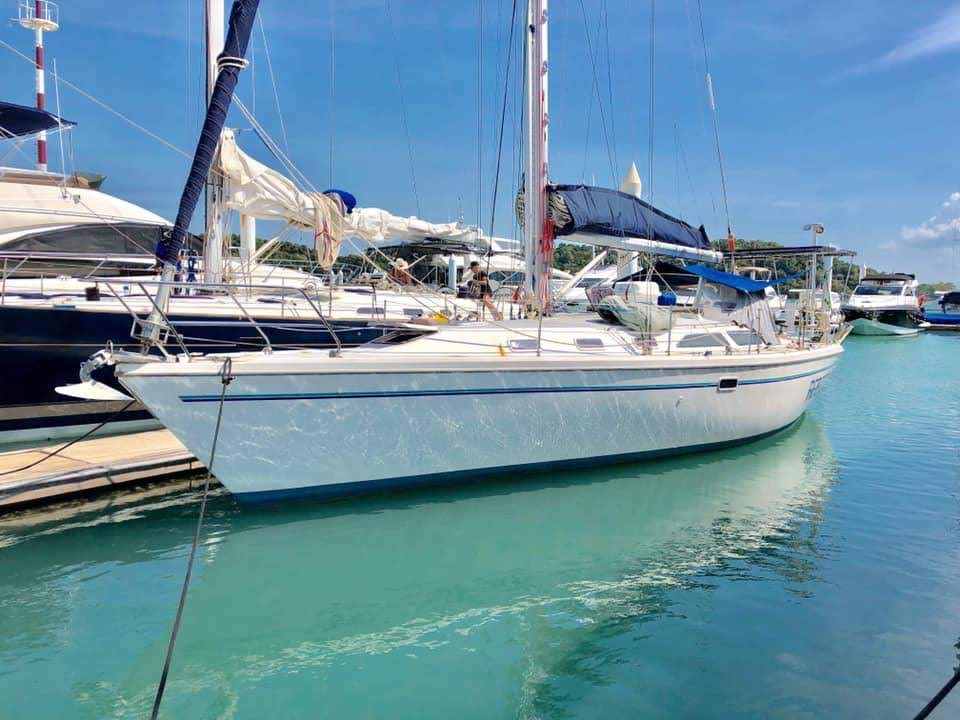GPS & AIS
December 27, 2014 10:39 UTC
Bahamas - about 75 NM north of Nassau
N 25 55.073 W 077 42.645 Course 292T Speed 2.5 knots
On Christmas Day in Nassau, Bahamas I had a long conversation with Bill (KI4MMZ) about the upcoming weather patterns. I had considered going to the Junkanoo festival and staying over until the 27th. The festival starts at 1 AM and runs all night. That suggests a departure in the morning is not wise.
December 26th is Boxer Day in the Bahamas. I got everything ready for a high tide departure. There is a bar that runs across the center of Nassau Harbor. When one leaves the marina and wants to exit through the west channel one has to cross the bar. I can do that very comfortably at high tide, not so much at low tide. I set off for the fuel dock only to discover it was closed for the holiday. In fact both fuel docks near the marina were closed. I decided that rather than turn around I would go with the fuel on board. (I had a difficult time getting out of the slip, a very large charter boat had pulled in next to me and the winds were adverse.)
At about 1600 UTC I cleared Nassau harbor and set sail almost due North. The winds were light (the story of this trip: to little, to much, wrong direction!) Making haste slowly I bobbed my way North.
Commercial ship traffic and cruise liners coming from the United States all use the same route that I had plotted. So do most pleasure boats although they do have other alternatives. As a consequence I have been passed by a number of large ships all day and night. It once again reminded me of the value of transmit/receive AIS, I joke a lot about Carnival Cruise Line ships. I equate them to the battle cruiser in Spaceballs with its sign “we brake for nobody.” After a long night (its almost dawn) of seeing many targets but none of them getting close my AIS collision warning alarm went off. Would you not guess, it was the Carnival Ecstasy! Closest point of approach (CPA) was 1.0 NM. I watched as she passed down my starboard side at 1.0 NM. My attention was then redirected to the ship behind, an MSC tanker. It too had tripped the alarms with a CPA of 0.8 NM. As I was watching the MSC tanker I realized that the Ecstasy had turned behind me. It had obviously altered it course to avoid me. The MSC tanker passed me at 0.8 NM. It is quite a show when a 900 ft long ship passes you at 17 knots in the dark.
This brings me to marine electronics. Reboot has quite a few, most even work most of the time. If I was outfitting a boat on a limited budget my first two purchases would be a GPS and a transmit/receive AIS. The GPS because the most important thing is to know where you are and with charts and a GPS that can be covered (yes, a chart plotter would be much nicer but more expensive.) The transmit capable AIS because it tells other ships where you are. Instead of having to get out of their way, they get out of your way. In light air such as I have been experiencing most of this trip it is virtually impossible to get out of the way in any significant way. Moving at 1 or 2 knots with a big ship bearing down on you is not a comfortable solution. Even if one starts the engine you are still going pretty slowly compared to the commercial vessels. When they see you on their AIS they make very minor course corrections and pass you without incident. It appears that 1.0 NM is the courtesy distance. Yes, a receive only AIS tells you they are there. But then you either have to contact them by radio or bear the burden of not being sure if they have seen you. IMHO of limited value. BTW, you might ask about radar. It turns out that sailboats are almost invisiable on big ship radar even with reflectors in the rigging. That is why a transmit AIS is so much better.
Fair winds and following seas J
Saturday, December 27, 2014
Subscribe to:
Post Comments (Atom)
-
Recently a female poster in one of the forums I read asked question about purchasing that first boat and living aboard. I decided to copy my...
-
Part 1 is here: http://blog.sailboatreboot.com/2014/10/living-aboard-and-buying-boat.html Part 3 is here: http://blog.sailboatreboot.com/...
-
I was invited by Nick to help him move his Swan 46 from Key West to Galveston TX a distance across the Gulf of Mexico of about 7500 nau...


No comments:
Post a Comment